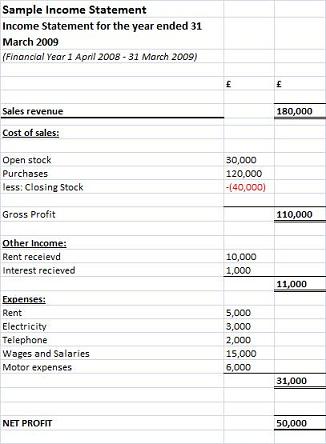
The agency records all subsequent cashflows related to the loan in the financing account TAS. Agencies report transactions involving principal to FIBB through CARS for both borrowings from and repayments to Treasury. By October 20 of the current fiscal year, agencies should submit an initial borrowing transaction through CARS with their current fiscal year borrowing estimate. They should submit any additional borrowings by the last business day of the month in which they need the funds. After the agency has disbursed all the loans in the cohort, it must repay Treasury to reduce any balance held in the financing account exceeding needs on the last business day of the fiscal year. However, if excess funds exist at any time, the agency may make an early repayment of principal.
Accounts with sub-level prefix codes can be established when an agency sends Fiscal Service a written request (see contacts) to establish direct and guaranteed loan financing accounts. Agencies must report changes in investments or redemptions in Marketable Securities to the Fiscal Service monthly on the Statement of Transactions. If agencies purchase Marketable Securities through an independent brokerage firm, they must notify the Fiscal Service, Financial Reporting and Statement Team (FRST), within 3 business days of such purchases (see contacts). This notification should report all outstanding investments at the Committee on Uniform Securities Identification Procedures (CUSIP) level, listing the CUSIP number and the Par Value. 31 U.S.C. § 3513 authorizes the Secretary to develop a coordinated system of accounting and financial reporting and directs each federal agency to give the Secretary of the Treasury such financial reports and information as the Secretary requires in preparing the required financial reports. Several statutes, such as 26 U.S.C. § 9602 (a), require the Secretary to prepare reports on the financial operations of the United States Government and of particular Government Investment Accounts.
Many of the statutes authorizing or requiring investment also expressly authorize the Secretary to issue obligations of the United States (i.e., Treasury securities) directly to these Government Investment Accounts as investments. Chapter 31 of Title 31 of the United States Code generally authorizes the Secretary to issue obligations of the United States to Government Investment Accounts for which statutes expressly authorize investment without specific authorization for the Secretary to issue obligations to the account. 31 U.S.C. § 3121 also authorizes the Secretary to determine the terms and conditions of the offers and the obligations. Under these statutes, the Secretary issues obligations of the United States (i.e., Treasury securities) to the Government Investment Accounts as investments. The federal entity shall provide to Fiscal Service advance written request of any requested changes to the operating process or lockbox services.
The Electronic Code of Federal Regulations
Refer to Volume I, Part 2, Chapter 3200, Foreign Currency Accounting and Reporting, for guidance concerning funds held at depositaries located overseas. The program account may pay administrative expenses directly or may pay them to another TAS (such as, salaries and expenses) on a reimbursable basis. When the program account TAS directly pays administrative expenses, the agency uses the CTA to record the disbursement. However, if administrative expenses in the program account TAS are paid on a reimbursable basis, the transaction appears as an expenditure transfer from the program account TAS to the receiving account TAS. The agency uses the CTA to record the outlay from the program account TAS and the offsetting collection in the receiving account TAS. Once the requesting agency has certified a borrowing or repayment transaction, the transaction becomes available for FIBB review.
Federal Program Agencies may instruct Fiscal Service to invest in a Par-Value GAS Security only when the statute governing the Government Investment Account requires or establishes a strong presumption in favor of investment in Par-Value GAS Securities. Federal Program Agencies have access to Treasury systems and can view daily information on deposits made using Federal Program Agency ALCs. It is the responsibility of the Federal Program Agency to classify in its internal accounting system the deposits to the appropriate Government Investment Account. (4) The designation made by the submitter under paragraph (c) of this section appears obviously frivolous. In such a case, GSA shall give the submitter written notice of any final decision to disclose the information within reasonable time prior to a specified disclosure date. Treasury processes warrants for definite appropriations of subsidy and administrative expenses enacted by the Congress.
What numbers are the Pair Factors of 5600?
Section 3513 of Title 31 of the United States Code requires the Secretary of the Treasury to prepare reports that will inform the President, Congress, and the public on the financial operations of the United States Government. In addition, Fiscal Service publishes Daily and Monthly Statements of the Public Debt and the annual audited Schedules of Federal Debt. However, Fiscal Service will redeem other than the earliest Issue Date security if instructed by the investing Federal Program Agency. If a Federal Program Agency for a Government Investment Account has lawful authority to borrow from either Treasury or the Federal Financing Bank, generally the Federal Program Agency cannot borrow for and hold investments in the same account.
- Federal entities are required to monitor lockbox execution of the SRS on a daily basis to ensure quality service, reconciliation of detail remittance data, and the timely transferring of funds.
- Agencies should send requests for guidance to Fiscal Service’s Bank Policy and Oversight Division (see Contacts).
- If a federal entity receives reimbursable services, then Fiscal Service and its FA, in coordination with the federal entity, will add further lockbox processing requirements to the SRS that reflect these added reimbursable services.
- Agencies should contact OMB to determine whether the program should use a special fund or general fund receipt TAS.
- The lockbox accelerates the deposit of funds into the Treasury’s account and provides secure, accurate, and efficient data capture of financial and remittance data.
In rare cases, a federal agency may have statutory authority to hold money without depositing it to the U.S. However, the federal agency still must report these funds on its monthly Statement of Transactions (224) and in its audited financial statements. Please refer to Volume I, Part 2, Chapter 3400, Accounting for and Reporting on Cash and Investments Held Outside of the U.S. Treasury, which provides accounting and reporting policies and procedures on cash not deposited in a Treasury General Account and investments in non-federal securities.
What is the Sum of Factors of 5600?
Fiscal Service is committed to maximizing electronic revenue collections, and federal entities should exhaust the possibility of electronic collection options prior to requesting lockbox services. Factors in determining whether lockbox services are appropriate include what electronic options are available, volume and dollar size of cash flows, and the legal need or requirement for paper remittances or original documents. Agencies must use the most current version of the CSC, available through the OMB contact with primary responsibility for the account, to calculate interest earned on uninvested funds. Agencies must audit their accounts and maintain adequate records to support any loan transactions and accrued interest computations submitted to FIBB for payment. Agencies must have these records readily available for internal auditors, Treasury, and Government Accountability Office (GAO) auditors, if necessary. Treasury uses the same rate for both the interest paid on borrowed funds and the interest earned on uninvested funds (refer to section 4635).

The federal entity shall pursue inquiries concerning reconciliation of detail data/documents processed through the lockbox directly with the lockbox bank customer representative. Remitters can submit credit card information through the mail for processing by the financial agent at the lockbox site. The IRS Lockbox Network consists of a limited number of financial agents that serve as collection points for various IRS taxes.
Chapter 4100
Deposit Fund Accounts hold monies owned by persons or entities other than the United States Government. Under Title 31, Chapter 31 of the United States Code the Secretary is authorized to borrow from the public and to pay interest on the amounts invested in Treasury securities. The Secretary is authorized under the same general borrowing statutes to borrow the monies belonging to persons or entities other than the United States Government, instead of borrowing from the general public, I TFM PART 5 CHAPTER 4600 and to pay interest on the amounts invested in Treasury securities. When a Federal Program Agency requests Fiscal Service to invest monies not belonging to the United States Government, Treasury will develop an MOU with the Federal Program Agency memorializing the agreement to establish a Deposit Fund Account to hold the monies. Certain of these statutes and treaties authorize, and some others require, the Secretary to invest all or portions of the monies in the accounts.
- Credit Reform did not change the treatment of transactions for pre-1992 direct loans and loan guarantees.
- If volumes drop too low, Fiscal Service reserves the right to close a lockbox or move it to an electronic collection service.
- It is Treasury policy that appropriated monies will not be invested unless there is a statutory requirement to do so.
- Federal Program Agencies have access to Treasury systems and can view daily information on deposits made using Federal Program Agency ALCs.
- After a TAS has been assigned to a new account, Fiscal Service will notify the Federal Program Agency of the Treasury-assigned TAS, the official account title, as well as the statutory authority for the account.
Fiscal Service will offer additional amounts of a GAS Security zero-coupon bond provided the time remaining to the Maturity Date and minimum incremental face amount requirements are met at the time the additional amount is purchased. For purposes of investing in Market-Based GAS Securities, Federal Program Agencies may select any appropriate Market-Based GAS Security in FedInvest. Except for Zero-Coupon Bonds, all Market-Based GAS Securities are created in FedInvest and available for investment when Treasury auctions the Marketable Treasury Securities. Zero-coupon bonds are established upon Federal Program Agency request and based on marketable pricing and determination of availability by Treasury’s Office of Debt Management (ODM). Once a Government Investment Account has been established within Fiscal Service’s investment accounting system, Federal Program Agencies must identify individuals that need access to FedInvest. The user and supervisor are required to sign the form and email it to If individuals have problems or questions with FedInvest, they may contact the Federal Investments and Borrowings Branch (see Contacts section below).
Once received by Fiscal Service, the Federal Program Agency cannot cancel an investment instruction for a GAS Security zero-coupon bond. It is the responsibility of the Federal Program Agency for a Government Investment Account to select the GAS Securities in which monies in the account are to be invested. Generally, the Federal Program Agency should select GAS Securities in principal amounts and having Maturity Dates or interest payments that are consistent with the investment strategy that the Federal Program Agency developed for the account. This chapter applies to some “Deposit Fund Accounts” in which the Secretary holds the monies as a banker, fiscal agent, custodian, or trustee for the owner of the monies, or holds them temporarily until ownership is determined. The Deposit Fund Accounts to which this chapter is applicable are established by federal statutes that also authorize or require the Secretary to invest all or portions of the monies in the accounts. This chapter prescribes the procedures to be observed by all federal entities involved with the lockbox paper check and/or remittance processing (electronic or paper) of federal entity receipts.

Federal entities are required to monitor lockbox execution of the SRS on a daily basis to ensure quality service, reconciliation of detail remittance data, and the timely transferring of funds. Federal entities are to prepare the necessary financial statements and reports to Fiscal Service (I TFM Part 2). This Treasury Financial Manual (TFM) chapter consolidates existing guidance to federal agencies on the requirements for using depositaries to hold public money. Federal agency financial personnel should share this guidance with program and procurement personnel throughout their federal agency.
If agencies invest in Treasury Inflation-Protected Securities, they must report to Fiscal Service any Inflation Compensation adjustments on these securities. Treasury prepares and distributes several reports and statements, on the financial management and operations of the United States Government. To support this effort, Treasury requires Federal Program Agencies to submit the financial information through GTAS.
Agencies may carry forward amounts of borrowed but undisbursed funds held in financing accounts to the next fiscal year only if obligating funds for disbursement from the cohort. When the cohort interest rate is reset (generally once per cohort after the cohort is 90 percent or more disbursed), agencies must reset the interest rate on any amount carried forward to equal the interest rate applicable to the next fiscal year. Agencies may use these balances in future fiscal years (subsequent to the fiscal year of the original obligation) only to partially finance the disbursement of loans in the same cohort as the original borrowing. It is the responsibility of the Federal Program Agency for a Government Investment Account to determine the amount of money in the account that is available for investment.
Fiscal Service also establishes collateral accounts for federal agencies to use for securing public money held outside of the U.S. The following subsections describe collections and disbursements of each liquidating account TAS as recorded on Section I of the CTA. Agencies must submit a balanced CTA document to Treasury with Sections II and III completed.
No comment yet, add your voice below!